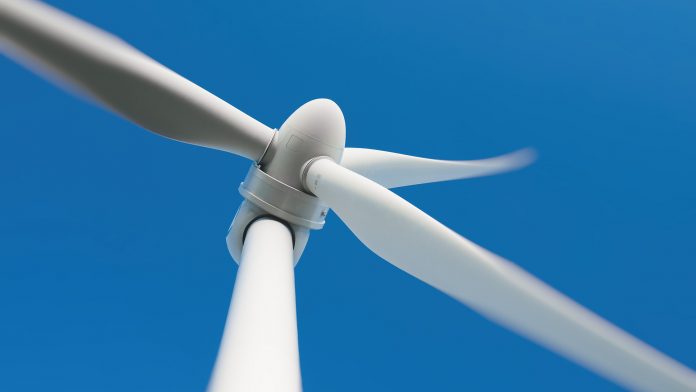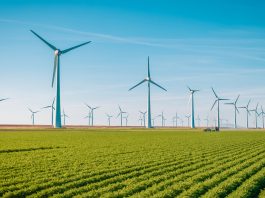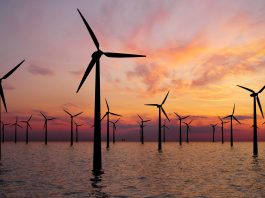WindEurope, the European industry organisation for wind energy, has appealed for a landfill ban on decommissioned wind turbine blades across the continent by 2025.
The new legislation was advocated by Giles Dickson, CEO of WindEurope, and Juan Virgilio Márquez, General Director of AEE, at the Spanish Wind Energy Association (AEE)’s Annual Congress, calling upon the European Commission to implement a Europe-wide ban on landfilling decommissioned wind turbine blades.
The proposal has been made after numerous industry-leading companies in the wind energy sector have revealed their plans to enhance the recycling and recovery of wind turbine blades, aiming to advance the development of sustainable recycling technologies for composite materials.
The organisations have urged the ban to be brought into full effect by 2025, applying to various other wind turbine components in the nacelles, with the wind industry unanimously committing to re-use, recycle, or recover 100% of decommissioned blades, pledging not to export them to other landfills outside of Europe.
Dickson said: “Wind energy is a green technology. Sustainability is part of our DNA. That’s why we are constantly striving to further reduce our impact on the environment. A ban on landfilling wind turbine blades will help accelerate the development of sustainable recycling technologies. Austria, Finland, Germany, and the Netherlands already have a landfill ban in place. But we call upon the European Commission to propose a harmonised European approach.”
The average lifespan of an onshore wind farm is around 20-25 years, with 85-90% of a wind turbines total mass currently being recycled, as their composition of steel, cement, electronics, copper wire, and gearing already has established recycling processes. Despite this, wind turbine blades pose a more challenging problem, as the structure of their composite materials – reinforced fibres and a polymer matrix – are especially difficult to recycle.
Realising a green ecosystem for recycling wind turbine blades is currently challenging because although there are a handful of companies proficient in composite recycling services, they are not yet developed enough or financially viable on a commercial scale, meaning that an industry-wide effort will be required to attain this objective.
Márquez said: “As an industry, we are determined to be at the forefront of sustainability and circularity. Wind turbine blades are non-toxic and landfill safe, but we believe landfilling is a waste of valuable resources. Our commitment to ending the landfilling of wind turbine blades by 2025 will help to make sustainable recycling methods commercially viable.
“Spain is the second biggest market for wind energy in Europe. The Spanish wind energy sector joins this initiative proposed by WindEurope. From Spain, we are sending a sign that the industry is committed to stepping up its efforts towards 100% circular wind turbine blades.”
Although currently low, the number of decommissioned wind turbine blades will rise exponentially in the coming years, with the majority of mature wind energy markets coming to their end of the cycle, equating to around 25,000 tonnes of blades by 2025, estimated to more than double by 2030, increasing to 52,000 tonnes.
WindEurope has urged Governments to step up their research and development of the commercialisation and scale-up of an array of blade recycling technologies, such as microwave pyrolysis, mechanical grinding, pyrolysis, high-voltage pulse fragmentation, solvolysis, and fluidised bed. Furthermore, funding from the EU to assist the development of new circular blade materials has also been also requested.
“We are not alone in this. We’ve already started developing cross-industry collaborations with other sectors that are working on composite recycling technologies. The right legislation will help support the creation of viable recycling value chains and to incentivise a market for recycled materials,”commented Giles Dickson.
The wind sector is now collaborating to devise strategies to accelerate the circularity of wind turbine blades, developing a roadmap of the steps required to do so, working with experts from the chemicals industry and other composite using industries, such as the boating sector.
Marco Mensink, Director General of Cefic, said: “The chemical industry stands ready to support the wind industry’s blade circularity ambitions. Thanks to innovative chemistry, we can help ensure that no decommissioned wind turbine blade ends up in a landfill. Using the power of chemistry, we are making more performant and long-lasting blades, which can also be fully recycled at the end of their life cycle.”
Philip Easthill, Secretary-General of the European Boating Industry, comments: “The recreational boating industry faces similar challenges to the wind industry when it comes to recycling composites. We share a common interest in developing new recycling pathways and facilities across Europe. Together we will identify the best routes to recycle our combined composite waste streams.”





